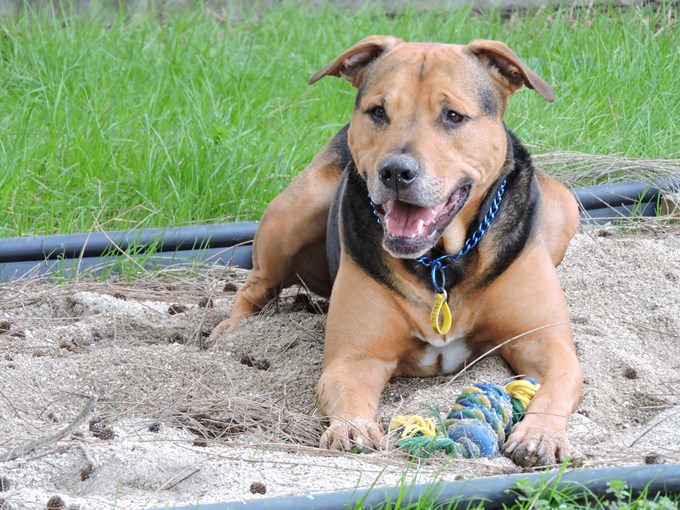Most children love playing with dogs, but it is important to teach them a safe way to interact and how to read the danger signs. This includes teaching kids never to approach a dog without permission, and what to do if a dog is scaring them.
Auckland Council animal management offers education sessions for schools and kindergartens. Please contact us on 09 301 0101 if you would like to book a session, or would like advice on what to teach your children about dogs.
Here are a few dog safety tips:
Never leave a child alone with a dog, even if it is one you know
Around a third of all dog attacks in New Zealand are on children under 12 years of age.
Over 70 per cent of bites come from a dog your child may know and love, so always supervise the interaction between dogs and children.
Many dogs appear to tolerate children handling them, because they are trying to be well-behaved.
It is up to the dog owner and the parent to recognise and intervene when a dog might not want to play, even if the dog is good-natured enough to allow it. Protect your dog, in order to protect your children.
Never approach a dog without permission
This applies to adults as well as children. A dog tied up outside a shop, or watching you over your neighbour’s fence, may not be as friendly as they look.
Dogs feel especially vulnerable when tied up. Unless you know the dog and can read the dog, it is safer not to approach it.
Most dogs don’t want to bite, but do so because they tried to protect themselves in other ways.
Know how to react if a dog approaches you
Stand still and allow the dog to dog sniff you. Move slowly and speak softly as quick movements and loud voices can scare a dog.
Avoid looking directly at the dog, which it may perceive as threatening. Never run away, the dog’s instinct is to chase, even if it is friendly.
Use firm and simple commands in a calm voice such as “no”, “stay” or “down”.
Know how to read a dog’s behaviour and body language
The best protection for you and your children is to understand when a dog might be a risk.
Being able to read body language gives you a better idea of what the dog is thinking, so you can act appropriately.
There are many myths about dog behaviour; a wagging tail doesn’t always mean a happy dog, and rolling onto their back very rarely means that they want a tummy rub.
Often, after someone gets bitten by a dog, they say that the dog gave no warning. In most circumstances, the dog tried very hard to ask the person to leave them alone, such as eye rolling, yawning, lip-licking, or simply turning away.
Unfortunately, because most people are unaware of these signs, the dog feels it has no other choice but to bite.
Contact us for more information about dog safety or visit Pet First Aid & Training for more helpful tips and advice.


